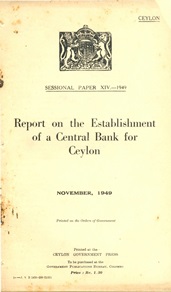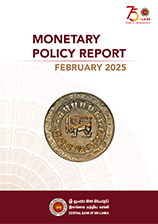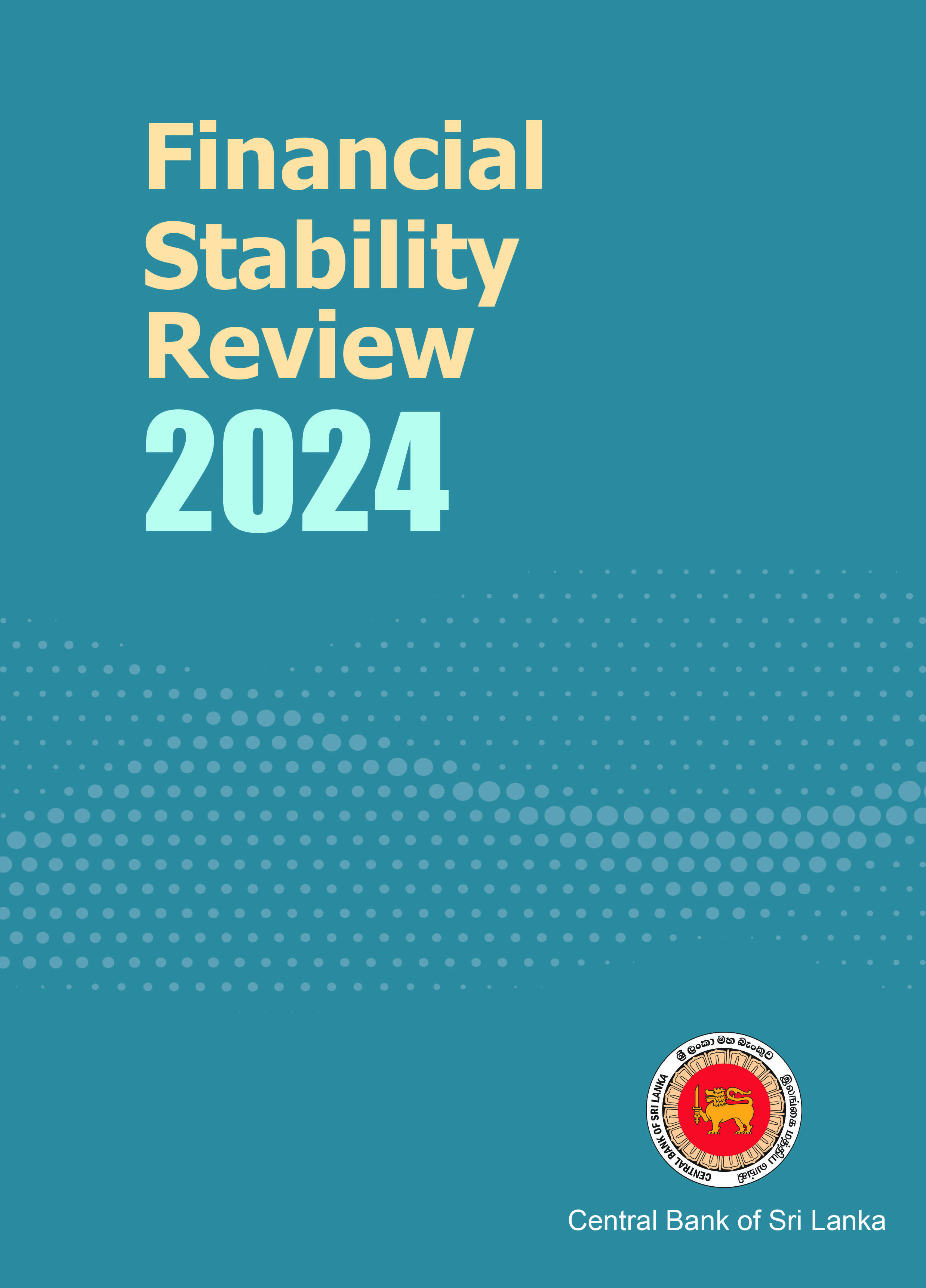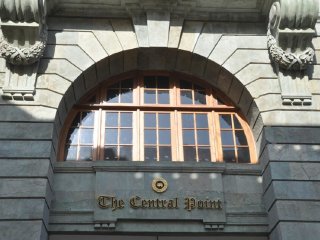The sole responsibility of compiling Gross Domestic Product (GDP) estimates is vested with the Department of Census and Statistics (DCS) since 2007. However, the Central Bank of Sri Lanka (CBSL) has observed media statements by interested parties, in relation to the involvement of CBSL in manipulating GDP estimates of the country, misleading the general public.
-
The Department of Census and Statistics Compiles the Gross Domestic Product
-
Financial Intelligence Unit of Sri Lanka Entered into a Memorandum of Understanding with Securities and Exchange Commission of Sri Lanka
 In terms of the provisions of the Financial Transactions Reporting Act, No. 6 of 2006 (FTRA), the Financial Intelligence Unit (FIU) of Sri Lanka entered into a Memorandum of Understanding (MOU) with the Securities and Exchange Commission of Sri Lanka (SEC) on June 19, 2018 at the Central Bank of Sri Lanka to establish a framework for sharing information on supervisory findings based on comprehensive risk-based supervision focused on Anti-Money Laundering (AML) /Countering the Financing of Terrorism (CFT) in the Securities Sector.
In terms of the provisions of the Financial Transactions Reporting Act, No. 6 of 2006 (FTRA), the Financial Intelligence Unit (FIU) of Sri Lanka entered into a Memorandum of Understanding (MOU) with the Securities and Exchange Commission of Sri Lanka (SEC) on June 19, 2018 at the Central Bank of Sri Lanka to establish a framework for sharing information on supervisory findings based on comprehensive risk-based supervision focused on Anti-Money Laundering (AML) /Countering the Financing of Terrorism (CFT) in the Securities Sector. -
Inflation in May 2018
Headline Inflation, as measured by the change in the National Consumer Price Index (NCPI, 2013=100), which is compiled by the Department of Census and Statistics (DCS), increased to 2.1 per cent in May 2018 from 1.6 per cent in April 2018, on year-on-year basis. The increase in the year-on-year inflation in May 2018 was mainly driven by upward price revisions to the items in the Non-food category. The change in the NCPI measured on an annual average basis decreased from 6.1 per cent in April 2018 to 5.7 per cent in May 2018.
-
Sri Lanka Purchasing Managers’ Index - May 2018
The Manufacturing Sector PMI recovered in May following the seasonal contraction observed in the previous month and recorded an index value of 60.6 in May with an increase of 15.1 index points from April. The recovery of PMI was largely attributable to the significant increase in production to cater both the new orders received during the month and the uncompleted orders received in April due to the new year holidays, especially in the manufacturing of textiles, wearing apparel, leather and other related products. New Orders, Stock of Purchases and Employment sub-indices also increased during the month. However, the Employment sub-index in manufacturing of textiles, wearing apparel, leather and other related products still remains in the negative territory.
-
The International Monetary Fund Releases the Fifth Tranche of US dollars 252 million under the Extended Fund Facility
The Executive Board of the International Monetary Fund (IMF) concluded the 2018 Article IV consultation with Sri Lanka and completed the fourth review of the three-year Extended Fund Facility (EFF), approving the disbursement of the fifth tranche amounting to SDR 177.774 million (approximately US dollars 252 million). The EFF aims at supporting the Balance of Payments and the broad economic reform agenda of the government.
-
External Sector Performance - March 2018
The external sector displayed a mixed performance in March 2018. Even though expenditure on imports continued to increase, exports which peaked to historic high levels in March 2018, contributed to a lower trade deficit vis-a-vis the previous two months of the year. Earnings from tourism increased notably in March 2018 continuing the positive trend observed since January 2018. Workers’ remittances rose during the month reversing the decline recorded in February 2018. Meanwhile, the financial account of the Balance of Payments (BOP) experienced some outflows in March, particularly with the withdrawal of foreign investments from the government securities market and the Colombo Stock Exchange (CSE). The level of gross official reserves of the country remained at a healthy level.
-
Deshamanya Amarananda Somasiri Jayawardena, Former Governor of the Central Bank, Passes Away
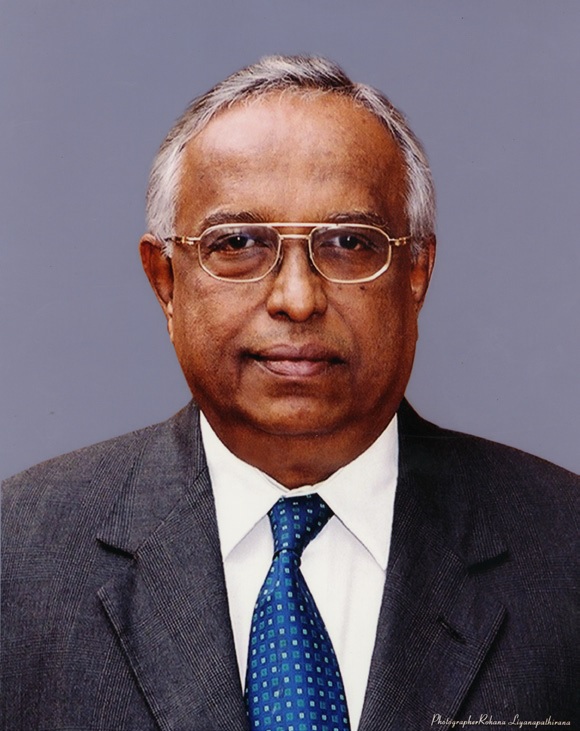 The Central Bank, with deep sorrow, wishes to announce the demise of Deshamanya Amarananda Somasiri Jayawardena, former Governor of the Central Bank of Sri Lanka. He passed away at the age of 82, on the 29th of May, 2018.
The Central Bank, with deep sorrow, wishes to announce the demise of Deshamanya Amarananda Somasiri Jayawardena, former Governor of the Central Bank of Sri Lanka. He passed away at the age of 82, on the 29th of May, 2018.Deshamanya A S Jayawardena was the tenth Governor, functioning in this position from November 1995 to June 2004. He joined the Central Bank in 1958 and served in the Secretariat, Establishments and Economic Research Departments before being appointed as Director of Economic Research (1977 – 1980).
-
External Debt and Reserves - Need to identify not only borrowings but also the debt repayments in analyzing how gross official reserves were utilized
A misleading news item has been disseminated in relation to Sri Lanka’s foreign reserves and external debt servicing.
The contents of the news item portray a misleading picture of the country’s external position. While stating that around USD 8.9 billion of borrowings by the government were absorbed to Central Bank reserves during 2015-2018, the article provides no consideration on the significant debt repayment effected by utilization of reserves during the period, which the Central Bank is obligated to as the official debt manager of the government.
-
Purchasing Managers’ Index (PMI) Survey
The Statistics Department of the Central Bank of Sri Lanka (CBSL) initiated conducting PMI survey for Manufacturing and Services sectors in the country starting from May 2015. The purpose of the survey is to provide purchasing professionals, business decision-makers and economic analysts with a timely set of data to help better understand industry conditions. This survey is conducted monthly by the department and it completed one year cycle in April 2016. Thus, the CBSL decided to release the survey results for the information of the general public. The report on the PMI survey results for May 2016 along with the past series of PMI is given below. The survey results can be accessed via CBSL website under Statistics section which will be updated on monthly basis.
-
A Statement from the Governor of the Central Bank of Sri Lanka
The Governor of the Central Bank of Sri Lanka Mr Arjuna Mahendran informed the Monetary Board at its meeting held on Friday, 24th June, 2016 that he would not be seeking re-appointment as Governor of the Central Bank of Sri Lanka when his term finishes on Thursday, 30th June, 2016 until the Parliamentary Committee on Public Enterprises makes its findings known on issues related to the issuance of Treasury Bonds in the years 2015 and 2016.







